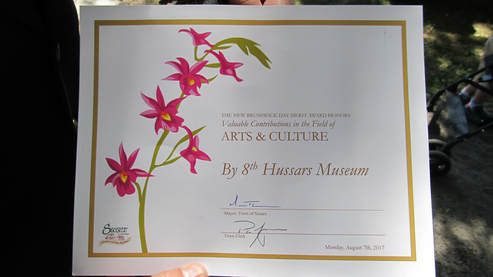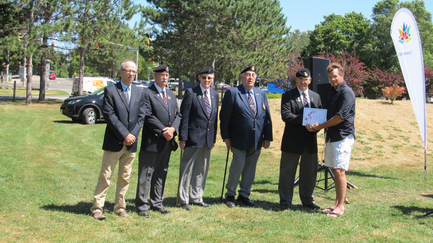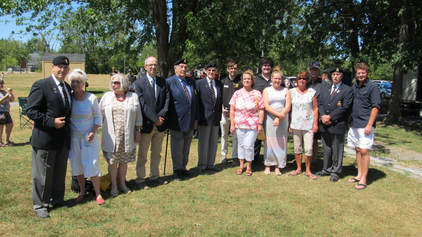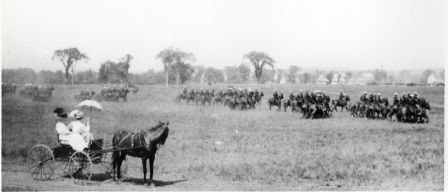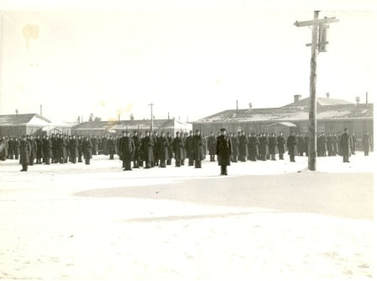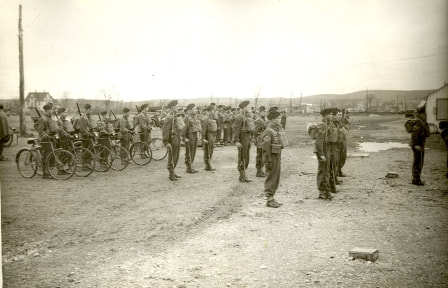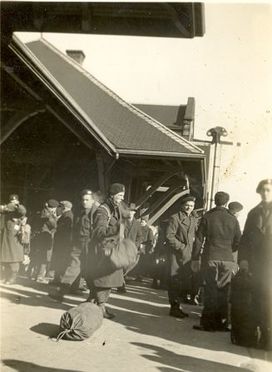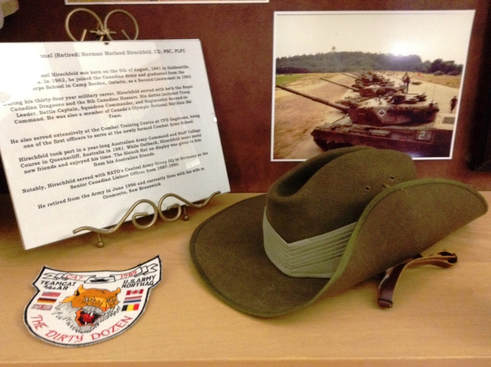“Summer 2017”
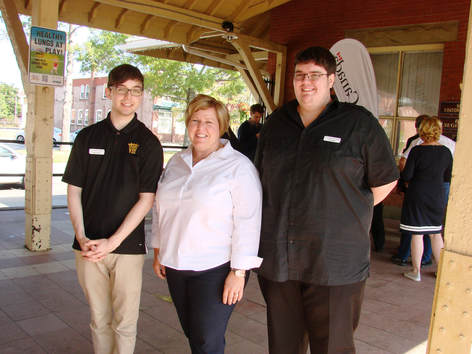
Summer is winding down a little too quickly and our summer students are finished this week. Thank you to our three outstanding students, for a great summer: Matthew Gamble, Hayden Johnston and Olivia McLean. We had a very busy summer, starting with visiting school classes, Sussex Summerfest and numerous visitors in for tours. We have received very positive feedback from the general public informing us of how pleasant of an experience their visit was because of the knowledgeable and pleasant staff.
The 8th Hussars Museum has summer student opportunities each year, funding is dependent upon grants from Young Canada Works, Community Museums Summer Employment Program and Canada Summer Jobs. Today we had the opportunity to thank Alaina Lockhart MP for Fundy Royal for our funding through Canada Summer Jobs and Young Canada Works. As well we thank the Province of New Brunswick Heritage Branch for their support through Community Museums Summer Employment Program.
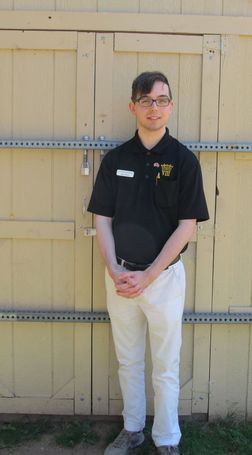
I was pleased to have been able to spend another summer with the 8th Hussars Museum in Sussex this year.
This fall I will enter my third year of studies at St. Thomas University in Fredericton where I am pursuing a double-major in International Relations and Economics.
For the majority of the summer, I spent time doing archival work on photographs of the Regiment from the Cold War era. Hopefully some former or current Hussars will be able to visit the museum and take a look. Some pictures will definitely bring back some fond memories and cause a few laughs!
I was also happy to play a part in the creation of the Camp Sussex Presentation given at the museum as a part of Sussex Summerfest 2017. Through my research for this project, I learned some very interesting details about life in Camp Sussex around the turn of the century.
Along the way I had the opportunity to speak with many veterans and many other interesting people who were able to stop into the museum. Especially as many of our WWII veterans continue to grow older, I make it a personal mission to learn as much as possible from these extraordinary men and preserve their crucial contributions for future generations.
All and all, I am thankful to have the opportunity to have a summer job in a field that I am passionate about, and one where I can learn from the life experiences of the Greatest Generation.
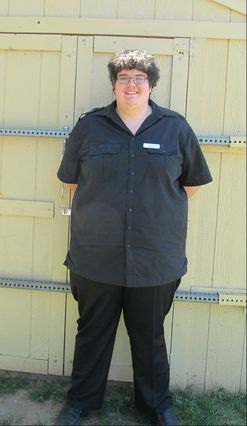
I'm grateful for the opportunity to come and work at the 8th Hussars Museum for a second year. I am currently entering into my third year of university, working towards the completion of a double-major in political science and psychology. This is in preparation for graduate school, were I intent to study law. In light of this, working at the Museum has provided me with experience applicable to my area of study, especially related to understanding differences between individuals.
My main focus at the Museum this year was on archival preservation. Over the course of this summer, I have had the opportunity to examine numerous historical photographs pertaining to Canadian Forces Operations in Canada and throughout the world. These photos provide insight into the operation of the Canadian Military Machine and the ever evolving doctrines employed by the Military Establishment.
Additionally, Museum staff participated in the Town of Sussex's Summerfest program; this saw the Museum host a presentation pertaining to the former Military Camp, Camp Sussex. I was fortunate to be able to participate and learn about this often neglected part of New Brunswick history.
Besides this, I have been fortunate to meet a plethora of individuals, ranging from veterans to tourists from across the continent. Many of these people were kind enough to share their experiences, both in and out of the armed forces.
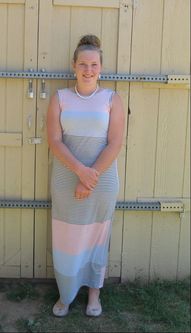
A message from Olivia
Thank you Carol for an amazing summer. I have had so many enjoyable learning opportunities over the course of the summer. Yesterday , I gave a tour to a past member of the 8th Hussars, it was a nice challenge to expand my knowledge and share everything I learned over the course of the summer. I have met some very interesting life changing people over the summer. Working at the museum was an experience that I was very fortunate to have been able to share with every new person I met. The world is a small place and it was amazing to see people who did not have knowledge on the world be opened up to a new concept and realize the pain and suffering people went through. You guys were amazing people to work with. Thanks again for an amazing experience that I will certainly never forget.
